Forest Vale Station
By Marg Powell, Specialist Library Technician, Metadata Services | 17 March 2021
Out of the Box … Lethbridge Family collection and the Gunggari Nation
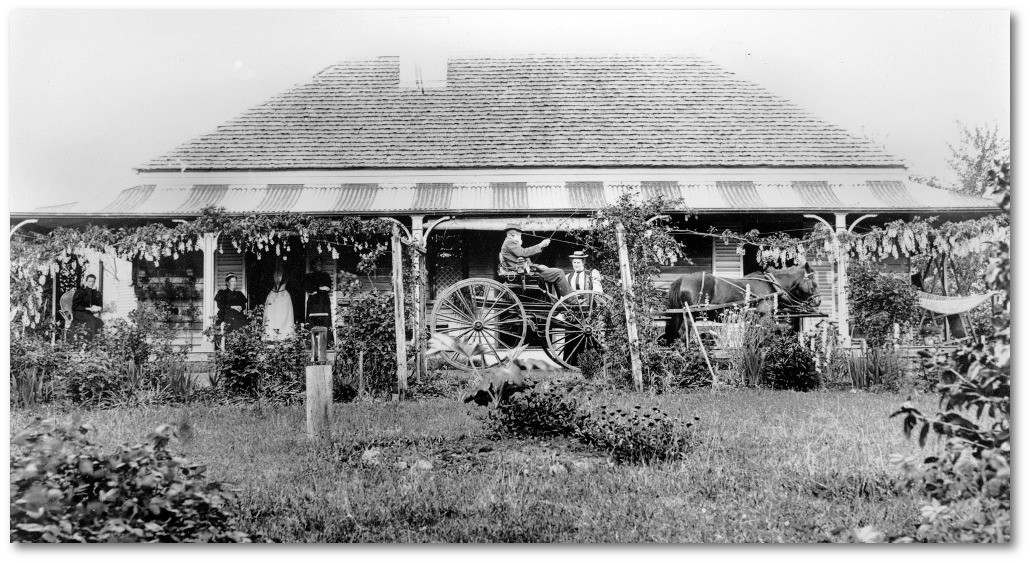
Forest Vale Station homestead, c1893
Negative number: 172319, John Oxley Library, State Library of Queensland
Robert Copland Lethbridge - an early pioneer and experienced stockman settled at Forest Vale, in the Maranoa region, along with brothers Edward and Mark Elliott, and established a cattle station of over 1400 square kms. By 1877 it consisted of 18 runs named: Saltbush, Boxwood, Terrarara, Myall Plains, Lagoon Station, Upper Possession [creek], Grassmere, Longreach, Gibburcolly, Acacia, Copland, Possession, Havilah, Hebron, Sharon, Simpson's Creek, Forest Vale, & Boxland.
Forest Vale was the homeland of the Gunggari people, to who the Maranoa River is central to their culture, knowledge and traditions. They resisted European settlement, initially targeting both settlers and their livestock. The first removal of Gungaari people began in 1906 and between 1914 and 1941, over 100 more were removed from their lands and placed on government reserves and missions. Some were fortunate to find work on stations in the area, fencing and mustering stock, and women as domestic servants.
The Lethbridge family retained diaries, station ledgers, and letters. Archives such as these have been traditionally considered to contain the stories of European settlers, but if we take the time to examine these records with a slightly different perspective they may hold clues to a different history.
Here-in are held not only the stories of pastoral life at Forest Vale, records of climate, and stock movements, but significantly - the names of the people who lived and worked on the station.
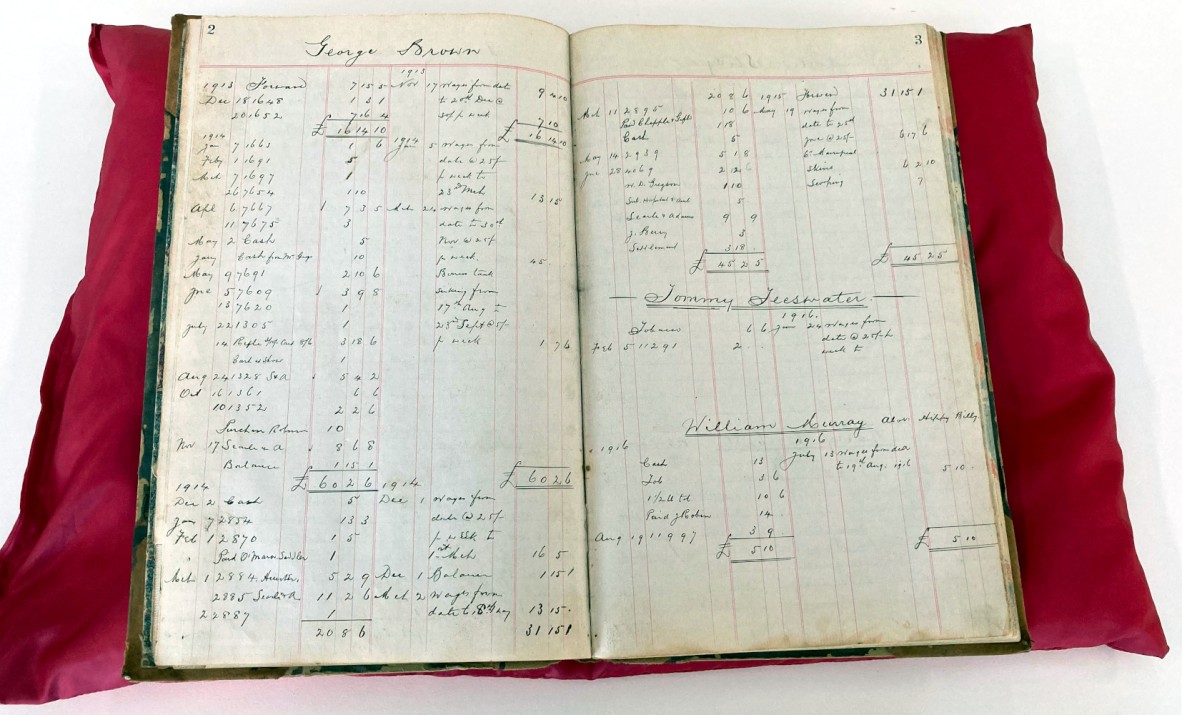
Wages ledger; Item 21 Ledger, 1913-1929
OM84-16, Lethbridge Family Papers; Forest Vale Station, John Oxley Library, State Library of Queensland
Several ledgers in the collection detail transactions for wages and rations paid to employees associated with Forest Vale - for services such as shearing, crutching, well sinking, horse breaking and blacksmithing - some of whom have been identified as being of Aboriginal and Asian heritage including:
Charles Alley, Harry Corbett, Jack Kearns, Harry Henry, Frank Inley, Arthur Law, Leslie Murray, William Murray [aka Hippy Billy], Harry Rookwood, Tommy Teeswater, Yong Six, P. Wing, Low Yee and many more.
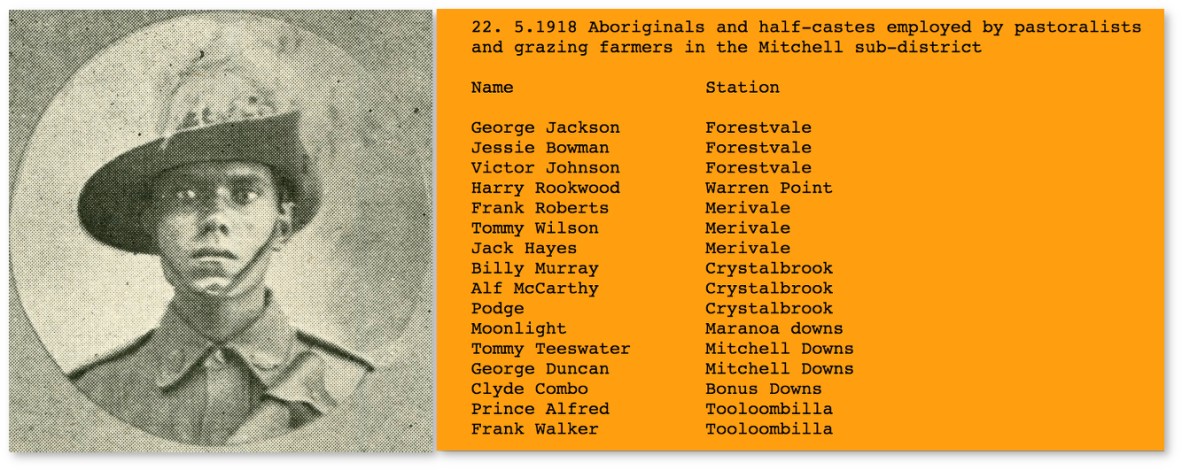
Left: Charley Alley [Allie], 11th Light Horse Regiment, The Queenslander Pictorial, 1918
Right: Entry from the Mitchell Police Letterbook, 1889-1921, Queensland State Archives
When Robert Lethbridge died in 1919 he was not a particularly wealthy man - like many pastoralists who endured the 'Federation Drought' of 1895-1903 much debt was incurred as the drought took its toll, accelerating the devastation of native grasslands by introduced sheep and cattle. Nevertheless he bequeathed £100 to an Aboriginal stockman who had worked for the family - known as Forest Vale Dick - a Gunggari man, who in 1906 was noted by the Mitchell Police as being destitute, and blind.
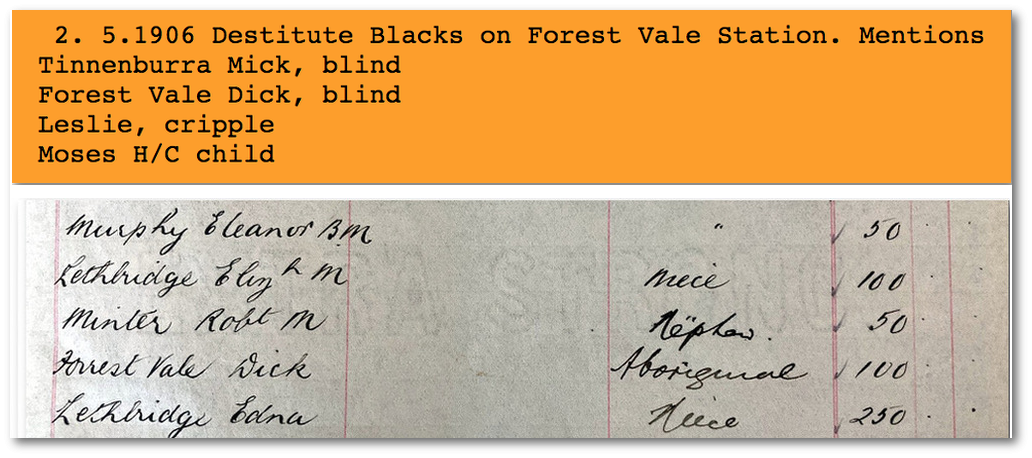
Top: Entry from the Mitchell Police Letter Book 1889-1921, Queensland State Archives
Below: Bequest to Forest Vale Dick, by Robert Copland Lethbridge who died in 1919.
Item 90 Probate ledger; OM84-16, Lethbridge Family Papers; Forest Vale Station, John Oxley Library, State Library of Queensland.
Robert Lethbridge and his wife Ella (nee Minter) had 13 children, 10 of who survived to adult hood. With one exception, his sons all maintained pastoral properties in Queensland.
Harold Lethbridge (1880-1944) who had spent his youth on Forest Vale Station, observed much of the habits and customs of the Gunggari people. He studied at Brisbane Grammar School and having graduated from Sydney University with a Bachelor of Medicine in 1904, he commenced a long career as a medical practitioner in Narrandera, in the Riverina Region where he worked closely with the Wiradjuri people of NSW.
From left: Doctor Harold Lethbridge; letters home; enroute to the Middle East, 1915 aboard HMAT Port Lincoln (State Library of Queensland collections)
During the First World War, Harold served with the Australian Army Medical Corps in Egypt, France and England; his wife Gwen followed him wherever possible. The Lethbridge collection contains over 50 letters from Harold to his father, describing in detail his experiences in the Casualty Clearance Stations, and his pioneering work in No. 2 Australian Auxiliary Hospital, Southall - assisting men who were limbless, and for this work he was awarded an MBE in 1918.
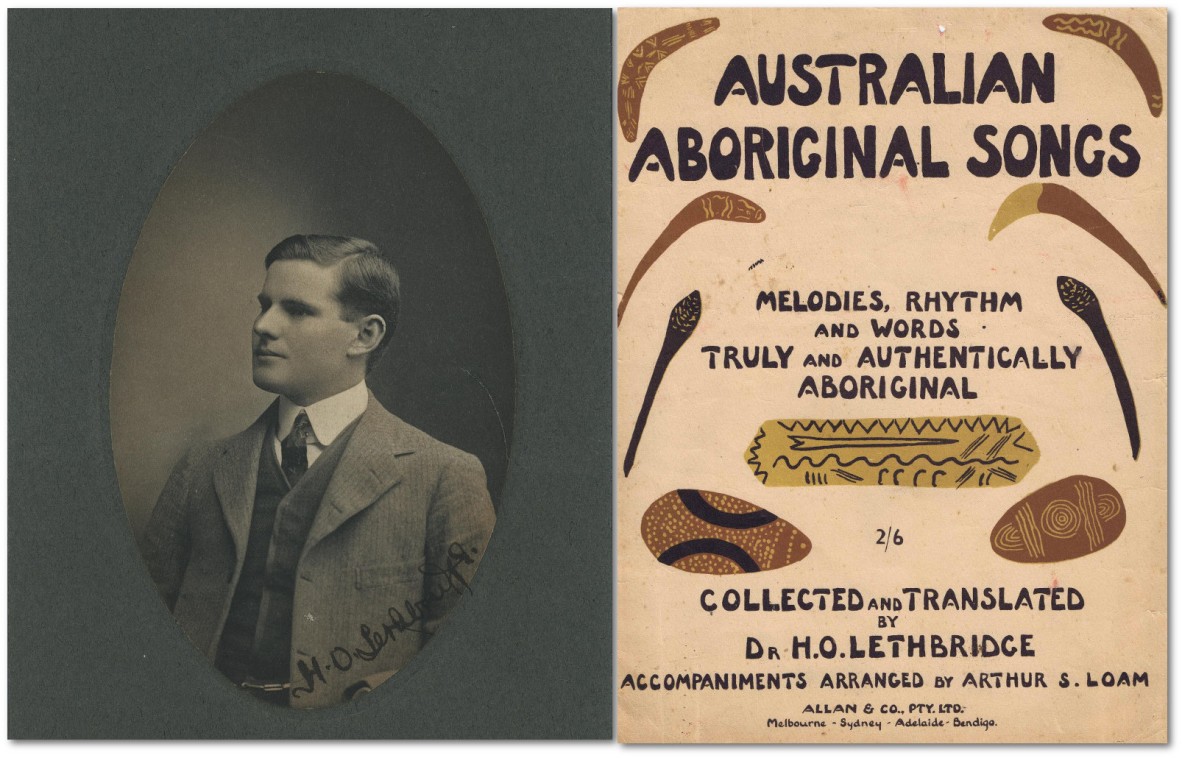
Doctor Harold Lethbridge; with booklet: "Australian Aboriginal Songs melodies, rhythm and words truly and authentically Aboriginal" / collected and translated by H. O. Lethbridge. John Oxley Library, State Library of Queensland.
Later in life Harold became a collector and translator of Aboriginal songs, and was given the name 'The great white father' by descendants of the Wiradjuri people, in recognition of his service to their community.
Several of the songs he collected have been recorded, notably 'Maranoa Lullaby' which was performed by Aboriginal tenor Harold Blair in 1950 and chosen by the National Film and Sound Archive as one of its ‘Sounds of Australia' - you can listen to a snippet of this recording online. More contemporary recordings include - the Wiggles 'Emma' in 1991 and the Brodskey Quartet in 2015.
Narrandera Museum established in 1968 holds items from Harold Lethbridge's personal collections, including Aboriginal artefacts, predominantly Wiradjuri.
Although these are records primarily relate to the Lethbridge family, they also document a small piece of their relationship with the Gunggari people - “by adjusting our perspective only a few degrees, we see a vastly differently world through the same window” … Bruce Pascoe, Dark Emu, 2014.
Find out more …
- OM84-16, Lethbridge Family Papers; Forest Vale Station
- View the Collection Guide
- Station records held at the State Library of Queensland
- Federation Drought 1895-1903, National Museum of Australia
- Mitchell Police Letter Book, 1889-1921, Queensland State Archives
- Gunggari Native Title Aboriginal Corporation
- Pascoe, Bruce. 'Dark Emu'. Magagala Books Aboriginal Corporation: Broome, Western Australia, 2014
- Australian Aboriginal Songs melodies, rhythm and words truly and authentically Aboriginal / collected and translated by H. O. Lethbridge
Comments
Your email address will not be published.
We welcome relevant, respectful comments.